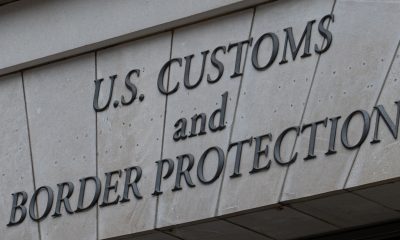National
China Emerges from Shadow of the U.S.

by George E. Curry
NNPA Editor-in-Chief
(FIRST IN A SERIES)
BEIJING (NNPA) – When Americans think of China, it is usually a faded image frozen in time. It is an old film, shot in what could pass as the beginning of time, of cold, dour, high-stepping soldiers bouncing past a review stand in unison with a rifle resting on one shoulder and both eyes fixed on the box of dignitaries sitting to the side.
But China is more than outdated military footage. The People’s Republic of China, as it is formally known, sits on an area of land slightly smaller than the United States. But its population of 1.3 billion people is four times larger than the U.S. population of 315 million.
Students in China, like those in other counties, tend to know American history better than most Americans. Whether it is arrogance, ignorance or a combination of both, Americans, in general, know little about their past and even less about China, an ancient civilization that dates back more than 5,000 years.
“Many Americans see China as a Third World, underdeveloped, cheap and poor country,” explained Carl Humphrey, an African American who has lived in Shanghai for five years. “In my opinion, this thought process goes back to education or mis-education. Media within the United States can also be partly blamed.”
Many Americans were introduced to China through those outdated newsreels, Charlie Chan movies that stereotype Chinese as smart and sneaky as well as martial arts movies featuring Bruce Lee and Jackie Chan. Blacks were drawn to martial arts movies, many of them filmed in Hong Kong, because they could see Black actors, such as Jim Kelly, kicking it with Bruce Lee.
But knowledge of China needs to extend beyond cinema if for no other reason than by 2027, according to projections by Goldman Sachs, China will overtake the United States as the world’s largest economy. And that will have profound implications not only for the U.S., which will slip to second place, but for western society in general.
“The West has thought itself to be universal, the unquestioned model and example for all to follow,” Martin Jacques wrote in When China Rules the World. “In the future it will be only one of several possibilities…. In the future it will be required to think of itself in relative rather than absolute terms, obliged to learn about, and to learn from, the rest of the world without the presumption of underlying superiority, the belief that ultimately it knows best and is the fount of civilizational wisdom.”
If China becomes the dominant economic superpower, as expected, it will be a different kind of world. China has benefited from globalization perhaps more than any other country; even in the formerly closed society, there are abundant signs that artificial geographical boundaries have been removed.
In this capital city, for example, you can’t find a Starbucks on every corner, but you don’t have to go far without seeing one. Look in another direction and you’re likely to see a McDonald’s. Hungry for some KFC? The colonel’s smiling face and long white beard are easy to spot in strip malls or as stand-alone stores. Even when you can’t spot an American fast-food chain, a Coca-Cola always seem to be nearby. If you’re looking for a place to lay your head, there’s the luxurious Ritz Carlton and the Fairmont hotels or the less expensive Hilton, Grand Hyatt, Courtyard and Radisson waiting for you to check in.
Unless you’re a native of New York City, a first-time visitor to the world’s most populous country might be shocked by the sheer number of people – 16.5 million in Shanghai, 12.2 million in Beijing, 9.4 million in Chongqing, 9 million in Shenzhen and 8.8 million in Guangzhou. In all, China is home to 20 percent of the world’s population.
More than the numbers, though, is how people behave. In overcrowded public places – even on international flights to China – many Chinese will cut in front you without saying “excuse me” or giving it a second thought. They don’t consider that rude, but it would certainly qualify as such in all 50 states back home and the District of Columbia.
Because of population density, most city residents live in high-rise apartments that look no different from those in major U.S. cities. Like Co-Op City in the Bronx, some high-rise apartments are clustered together. Others have more distance between them. And like Manhattan, another New York borough, there is constant motion.
In less congested quarters, the Chinese people we interacted with were hospitable, gracious and eager to welcome foreigners to their country. Chinese are known for sending students abroad to study, in hopes that they will return home and put that knowledge to use. But few American students study in China, something President Obama plans to change.
In November 2009, Obama announced the “100,000 Strong” initiative, a private-sector philanthropic effort to expand the number of U.S. students studying in China.
“Ten times more Chinese students come to the United States for educational programs than Americans who study in China and 600 times more Chinese study the English language than Americans who study Mandarin. This imbalance in knowledge can undermine strategic trust between the two countries,” a U.S. State Department fact sheet noted.
It observed, “The need for Americans to gain greater exposure to and understand China is clear: there is perhaps no more important or complex relationship in the world than that between the United States and China in terms of securing global peace and security. Virtually, no major international issue – whether global economic recovery or climate change or nuclear non-proliferation can be solved without the active engagement of both the United States and China, working in concert.”
Chinese students are far ahead of the game, studying English as early as the first grade.
On a visit to Ling Zhao Elementary School in Xi’an, the capital of Shaanxi province, first graders ran up to a group of Black journalists and said, “Hey-lo,” before breaking into a big smile. One first-grader eager to try out his English said in perfect English, “What is your name?”
In the United States, not many students learn that modern day China is home to one of the world’s earliest civilizations. During the early 1920s, excavators discovered what became known as the Peking Man, skeleton bones believed to date back to approximately 750,000 years.
Chinese imperial dynasties began with the partly mythical Xia. The first Chinese dynasty that left recorded records was the Shang (Yin), which settled near the Yellow River from the 17th to the 11th century B.C. The Qin Dynasty, established in 221 B.C., was the first unified Chinese state. The Republic of China was established in 1912, marking an end to imperial rule. A Chinese Civil War ended in 1949, leading to the establishment of the People’s Republic of China.
Ironically, Africans and African-Americans may have stronger ties to China than most Whites.
The first trade exchanges between China and Africa are believed to have taken place during the Tang Danasty [618-907], but reached its height during the Ming Dynasty [1368-1644]. Zheng He, a famous Chinese navigator, visited the East Africa coast seven times between 1405 and 1433. Consequently, China learned about the nearby continent and its rich natural resources.
China established diplomatic relations with Egypt in 1956 and supported many African liberation movements in the 1960s and 1970s. It established formalized diplomatic and economic relations with 51 African countries and still maintains ties with 45 of them.
Because of those relationships, China was able to finally join the United Nations General Assembly when, led by African nations, the UN voted in 1971 to expel Taiwan and replace it with the People’s Republic of China.
To align itself with the struggle against imperialism in the 1930s and 1940s, China courted numerous Black activists opposed to the second-class status of African Americans in the U.S. Scholar/activist W.E.B. DuBois met Mao Tse-tung and at one point, his birthday was celebrated as a national holiday in China. Paul Robeson and Langston Hughes visited China to register their disapproval of America’s version of apartheid.Malcolm X was part of a new wave of Black nationalists to visit China in the 1960s that included Huey P. Newton, Eldridge Cleaver, Angela Davis, and H. Rap Brown.
Black leaders showed an appreciation for China on the home front as well. The first sizable Chinese immigration to America coincided with the California Gold Rush in the early 1850s. More came to help build the First Transcontinental Railroad. But as gold became scarce, resentment against Chinese grew and in 1882, Congress passed the Chinese Exclusion Act to block further Chinese immigration to the U.S. Abolitionist Frederick Douglass opposed the act and Blanche K. Bruce, a Black U.S. senator from Mississippi, voted against it. The law was not repealed until passage of the Magnuson Act in 1943.
Until President Richard M. Nixon’s historic visit to China 41 years ago, the U.S. and China did not enjoy diplomatic relations. Even after they were established, Americans kept a distance from “Communist China” or “Red China,” as the People Republic of China was called. For years, China was lumped in with communists in the Soviet Union. But after the collapse of the Soviet Union in 1991 and China’s move toward a market-oriented society in 1978, Chinese say political labels do not fairly describe them – or what they have been through.
In fact, China has not always been ruled by communists.
“The 1911 Revolution overthrew the monarchy and China established the first parliamentary democracy in Asia,” explained Yan Jian, assistant to the director of the China Center for Comparative Politics and Economics in Beijing. “The new regime was based on the temporary Constitution, which drew heavily on European and American experiences. Mr. Sun-Yat-Sen was nominated to be the first president of Republic of China. In 1912, Yuan Shikai was elected by the Senate as the second president. Yuan died in 1916 after his failure in restoring monarchy in China. From 1911 to 1928, China had a democratic form of government, but lacked the essence of democracy. The system was unstable in nature: its government form shifted frequently from parliamentary democracy to presidency even to military government. Its functioning fell into chaos.”
Yan added, “In 1928 after Chiang Kai-shek militarily defeated all warlords and united China in formality, Chiang reintroduced a dictatorship form of government in China, thanks to the devastating results of ill-functioned democracy.”
Today, by all accounts, China has undergone dramatic change.
“Since the late 1970s, China has moved from a closed, centrally planned system to a more market-oriented one that plays a major global role – in 2010 China became the world’s largest exporter,” notes the Central Intelligence Agency World Factbook. “…China has implemented reforms in a gradualist fashion.”
But there is a big gap between perception and reality.
Craig Trygstad, a Minnesota native who taught in Beijing from 2000-2006 and in Shanghai from 2006-2009, said: “China is neither as forbidding as the images I’ve seen and read about from the Mao era nor as wide open-anything-goes as recent stories of entrepreneurship would suggest. And as much of a cliché as this phrase is, China is a land of vast contrasts – family, incomes, languages, cultural and ethnic traditions and geography.”
(This 4-part series is the outgrowth of a week-long African American Media Leaders Mission to China sponsored by the China-United States Exchange Foundation, a non-profit organization whose goal is to foster a better understanding between the people of China and the United States. Neither the foundation nor government officials in China had any imput in these stories or saw them prior to publication. The 7-member U.S. media delegation was led by Cloves Campbell, Jr., publisher of the Arizona Informant and chairman of the National Newspaper Publishers Association. The trip included visits to Beijing, Xi’an and Shanghai.)
[NEXT: Life in China]










































